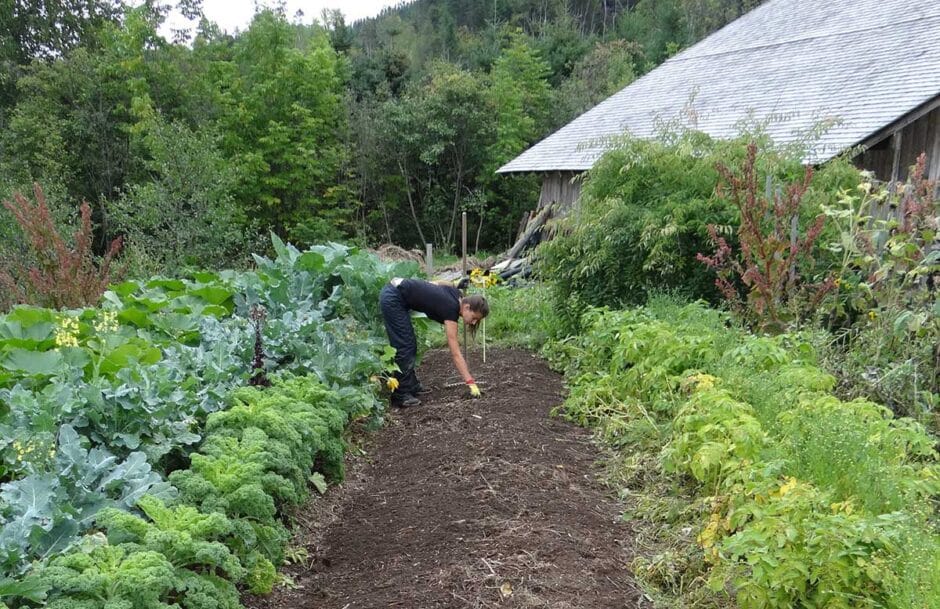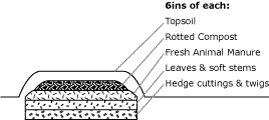What is a hot bed?
A hot bed is a trench filled with organic materials and capped into a mound with topsoil. This method was very popular with the Victorians and is one of the most economical and rewarding ways to produce a good crop. You should expect high fertility for at least 4 years, or until the mound flattens. As the organic material in the mound breaks down, it will increase the temperature (hence the term ‘hot bed’). This will induce a fast-growing, early crop as well as a long-term improvement in general soil structure.

Preparing the ground
To create your cosy seedling sanctuary, start by digging a trench 12–14 inches deep. The length is up to you, but remember, you’ll need to reach all areas without stepping on and compacting the soil. Aim for a width of around 3ft, providing ample space for your seeds to germinate and sprout.
Top Tip: If you have raised beds in your garden, you can simplify things by digging your trench directly along the edge. This way, you can easily access both sides without having to clamber over the barrier.
Building the hot bed mound
- Mark out the trench with string or spray paint to ensure straight lines and even depth, and dig it out.
- Loosen the soil at the base of the trench to create a good drainage layer.
- If your soil is heavy clay, line the bottom of the trench with gravel or broken crockery to further improve drainage.
- Fill the first 6–8 inches of the trench with hedge cuttings, twigs or wood chippings.
- Apply a further 6 inches of leaves and/or soft stems.
- Add 6 inches of fresh animal manure.
- Add 6 inches of rotted compost.
- Replace about half (6 inches) of topsoil to cap off the mound.

Remember, a well-prepared trench is the foundation for a thriving hotbed, so take your time and get it right! Now, on to filling it with the good stuff – the magical heat-generating layer that will nurture your seedlings. Your hot bed is ready for planting.
Maintaining the Internal Furnace:
The heart of your hotbed lies in the layer of manure or compost at the base. As nature’s tiny alchemists – microbes – break down this organic matter, they generate heat, keeping your soil toasty for your precious seedlings. Regularly monitor the temperature with a soil thermometer, aiming for a steady 18-20°C (64-68°F). If the temperature dips, you can add more insulating material like straw or leaves around the edges. Remember, overheated beds can be detrimental, so avoid piling on too much insulating material initially.

![Organic Herbicides & Pesticides [100% Organic]](https://www.theallotmentgarden.co.uk/wp-content/uploads/2009/07/natural-pest-control-150x150.jpg)

